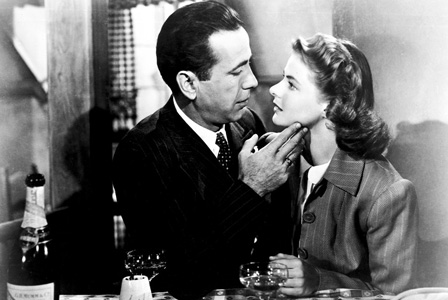Is Cinema the Worst It’s Been in 50 Years? By Willie Jones
Tuesday, August 18th, 2015 Some say, “Yes, it is.” Two-time Oscar-winning actor Dustin Hoffman recently criticized cinema today, saying “…it’s the worst that film has ever been — in the 50 years that I’ve been doing it, it’s the worst….” Hoffman attributes the time constraints that directors have on getting their films done as part of the problem. He notes that The Graduate, a gradually small film took years to put together despite its simplicity. But what did we get? A classic that has stood the test of time and is now considered one of the all-time great films (which I can attest to). But to truly understand Mr. Hoffman’s point of view, consider where he started fifty years ago.
Some say, “Yes, it is.” Two-time Oscar-winning actor Dustin Hoffman recently criticized cinema today, saying “…it’s the worst that film has ever been — in the 50 years that I’ve been doing it, it’s the worst….” Hoffman attributes the time constraints that directors have on getting their films done as part of the problem. He notes that The Graduate, a gradually small film took years to put together despite its simplicity. But what did we get? A classic that has stood the test of time and is now considered one of the all-time great films (which I can attest to). But to truly understand Mr. Hoffman’s point of view, consider where he started fifty years ago.
Hoffman made his cinematic debut 48 years ago, to be exact, in 1967’s The Tiger Makes Out, but followed it that same year with The Graduate. Now, 1967 happens to be the turning point of cinema. We had the most explicit film of all-time released that year, in Bonnie and Clyde, which changed movies forever. We had the first film to ever show a black man hitting a white man with In the Heat of the Night. We had film that tackled interracial relationships with Guess Who’s Coming to Dinner. It was a banner year that sparked the revolution in cinema and it went on into the 70s. The new thing was naturalism – in everything. Naturalistic acting from the likes of Al Pacino and Jack Nicholson, naturalistic direction from the likes of Francis Coppola and Roman Polanski, and naturalistic dialogue from the likes of Robert Towne and William Goldman. That was the formula for films such as The Godfather and Chinatown.
Also consider that at the time, during the late 60s and 70s, America was in a cultural revolution. It was okay to say what you wanted, to do what you wanted, to be who you wanted to be. Things like sex, homosexuality, explicit war opposition, political opposition, civil rights, women’s rights and all the things that were deemed “impolite” beforehand, could now be expressed. And it showed in our films. Movies could now show nudity, movies could now speak out vividly against politics, movies could now use profanity, and movies could portray violence as much as they wanted. So one should understand that movie making at that time was at an artistic high. For the first time, writers and directors could say what they wanted and were encouraged to do so. Therefore, fresh ideas and stories were being told rapidly.
It was just two years after The Graduate was released that Dustin Hoffman starred in the first X Rated movie to win best picture, Midnight Cowboy (which is also an all-time great film). Things were changing for sure, therefore originality was at an all-time high. Now, fast forward 48 years.
What haven’t we seen? There is no longer anything edgy or original. The advent of technology and the sheer fact that time has softened the sensitivities of society, has made it so that people of all-ages have seen something of everything. There’s no opinion that hasn’t been heard, and no amount of sex or violence that hasn’t been seen. Most importantly, there is no story that hasn’t been told or a plot that hasn’t been seen.
So while Dustin Hoffman says that a part of the issue is filming constraints with directors, I say cinema is the worst it’s been in 50 years, because of the lack of originality. But, with that said, I’m going to make an assumption that Hoffman is talking about mainstream films, movies with big budgets and big studios behind them. I say that it’s because independent cinema is where the originality and uniqueness is. And, the problem is: no one sees them. People don’t want that.
Movies like Birdman, Whiplash or Cold Souls go unseen because no cares to see them. A part of the problem, beside a lack of good stories and time constraints, may be audiences. What ever they see, Hollywood makes. In Hoffman’s prime, audiences wanted Carnal Knowledge and Serpico. Audiences are so numb to explicit material, that edge with class is no longer desired. Now, they want Ant-Man and Ocean’s 11.
The transition from where cinema was in the late 60s and 70s to now, is sad. It makes cinephiles a rather outcast and  lonely bunch in cinematic interest, because all of our favorites are movies that no one sees or cares to see. I mean, have you seen Win Win? Don’t worry, few have. So I agree with Dusty, cinema is at the worst it’s been since he entered the movie business in 1967. And unfortunately, there is little indication that circumstances will change. Well told stories just aren’t in fashion anymore. People don’t flock to see them.
lonely bunch in cinematic interest, because all of our favorites are movies that no one sees or cares to see. I mean, have you seen Win Win? Don’t worry, few have. So I agree with Dusty, cinema is at the worst it’s been since he entered the movie business in 1967. And unfortunately, there is little indication that circumstances will change. Well told stories just aren’t in fashion anymore. People don’t flock to see them.
I guess those of who us who want that to change will either have to make the films we want ourselves or hope that the likes of Alejandro Innuritu, Bennett Miller, J.C. Chandor, and Paul Thomas Anderson continue to be the exceptions in today’s movie world.
Who knows? Maybe when Hoffman’s debut reaches an actual fifty years in 2017, another revolution will happen and we will get caught up in the passionate, artistic frenzy that movie fans of the 70s were caught in.
Thank you for reading. Willie Jones.










 Sofia Vergara is the star of one of the hit TV shows, Modern Family. At 42, she is on top of the world with everything she has going. She earned a total of $140 million dollars from June 2013 to June 2014. It is reported that she earns $325,000 per episode but also earns income with her endorsements. She is the face of Diet Pepsi, Cover Girl, Head & Shoulders and the co-founder of Latin World Entertainment.
Sofia Vergara is the star of one of the hit TV shows, Modern Family. At 42, she is on top of the world with everything she has going. She earned a total of $140 million dollars from June 2013 to June 2014. It is reported that she earns $325,000 per episode but also earns income with her endorsements. She is the face of Diet Pepsi, Cover Girl, Head & Shoulders and the co-founder of Latin World Entertainment.

